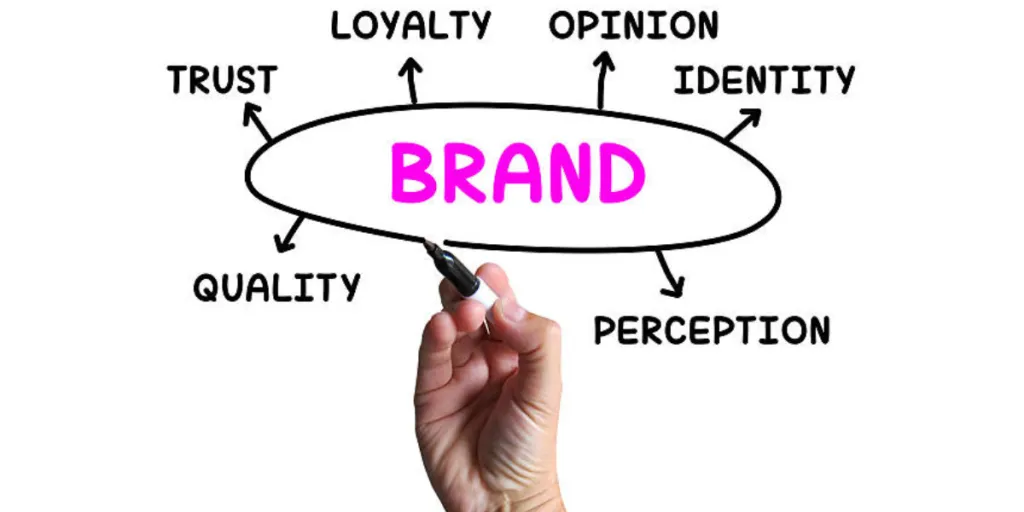Although brand identity and brand image are closely related concepts, it is crucial for any business seeking a unique and resonant position in the market to be well-versed in their underlying differences. This article therefore unpacks some of the key differences between these two terms, allowing businesses to draw on this distinction to improve their marketing strategy in 2024.
Table of Contents
Definition of brand identity
Definition of brand image
Importance of understanding the distinction
Conclusion
Definition of brand identity

Brand Identity is the true essence of a brand; it incorporates all visual, verbal, and sensory elements intentionally designed to convey what type of character a brand has. It acts as a roadmap, specifying how a brand wants to be perceived by its target audience. The elements of brand identity include logos, color schemes, fonts, and the mood created in communication. Brand Identity aims to create a unified and distinctive image that influences how consumers think about the brand.
Definition of brand image

The brand image describes the actual perception formed in the minds of consumers based on their exchanges with the brand. It is far more than a deliberate projection and reflects how every interaction with the brand affects its perception, advertising, customer care, or product satisfaction.
Importance of understanding the distinction

Understanding the difference between brand identity and brand image is essential to effective brand management. Alignment between brand identity and brand image helps to develop consumer confidence and brand loyalty.
Conversely, misalignment results in confusion and diminished confidence. This section focuses on the tangible implications for businesses in search of a reliable brand position and touches upon how it ties in with their overall brands.
1. Building trust and loyalty
Strategic application of brand identity and image is critical to building consumer trust and loyalty. Companies with solid brand personalities are more likely to establish long-term customer relationships. For example, Google has developed a prominent brand identity through its consistent use of the familiar logo’s vibrant colors and clean design that makes users trust and be loyal to their services, demonstrated by their reliance on them.
2. Influencing customer decisions

Brand identity and image are crucial in influencing the consumer’s perception of a brand, affecting how they make purchasing decisions. A prime example is Apple, whose sleek and minimalist brand identity perfectly mirrors its premium and innovative persona. This constant characterization plays a crucial role in shaping consumer behavior as people tend to associate Apple products with high quality and modern technology. This is the brand image Apple has created verbally and non verbally, thus influencing a consumer’s willingness to invest in Apple goods.
3. Competitive advantage

A competitive advantage in the market is achieved through maintaining a good brand image and identity. A company that successfully handles their brand identity and image can obtain an advantage over its rivals. For instance, Nike has created a solid brand image with its “Just Do It” slogan and the famous Swoosh logo. This positive brand image supports Nike’s competitive advantage and makes it a favorite choice in the sports apparel market.
4. Brand recognition

Brand recognition is vital in B2B marketing strategies, and brand identity contributes greatly. Innovative and prominent companies such as IBM, with its well-defined blue logo, have strengthened their brands over the years. This acknowledgment complements marketing and advertising initiatives by establishing a solid foundation for successful B2B relationships, as businesses tend to trust respectable companies.
5. Employee alignment
Brand identity and image help create a sense of unity among the employees since they emulate what their employer strives for. One of these companies is Google, which has a long-standing reputation for a colorful and open work culture. The fit of the employees with Google’s brand identity and image makes for a vibrant workplace, elevating innovation and employee collaboration aimed at underpinning better B2B strategies in favor of this employer organization.
6. Pricing power

Brand identity and brand image may influence the terms of pricing. Firms such as Tesla have used a reputation that is innovation and sustainability-focused to charge high prices for their electric cars. The pricing power of Tesla stems from the perceived value created through its brand awareness and impacts, resulting in a favorable link between brand perception and the price that can be marketed to buyers.
Conclusion
Brand identity reflects the brand’s essence, and this influences trust and loyalty. Strategic linkage with brand image directly impacts consumer behavior and buying decisions. In this way, brand image and brand identity work to give a business a competitive advantage.
On top of this, the internal implications of brand identity for aligning employees and the relationship between pricing power and perceived value are significant factors to consider. Cultivating these elements is therefore critical to achieving a resonant brand presence and tailoring an effective marketing strategy that will stand out above the competition.




